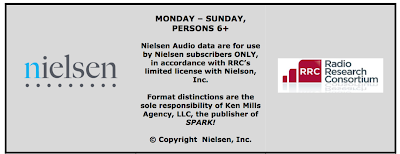Consultant,
researcher and blogger Fred Jacobs cited “trust” as a defining characteristic
of public radio in a recent post on his blog [link].
Jacobs is an insider in both
commercial and noncommercial media.
He urges folks in the languishing commercial radio biz to in study and emulate
the bond of trust between public radio stations and their listeners and supporters.
Jacobs warns that if trust is broken, the results can damage the entire enterprise:
Trust and reputation go
hand in hand. And when brands are not transparent, honest, and truthful,
it has an even great likelihood these days of coming back to bite them.
To
demonstrate trust in action, Jacobs included a slide (on the right) from last
year’s Public Radio Tech Survey 9 (PRTS 9). It shows how public radio listeners
reacted to the statement: I trust
public radio.
Eighty-nine
percent of the sample agreed or strongly agreed with the statement.
The
belief that public radio is trustworthy was strong in all demographics,
particularly for folks of millennial ages. Jacobs said this often unstated, but
deeply felt, trust by listeners is a reason NPR News/Talk stations are enjoying
some of their strongest ratings performances in history.
Public
Radio Techsurvey 10 (PRTS10) is now in the field. Jacobs says this year’s study will
further examine "trust": The unique bond between public radio and it’s listeners. Results
of PRTS10 are likely to be presented at the Public Radio Content Conference
[link] in August in Austin.
 |
| Bill Siemering |
Earning
the trust of listeners is deep in the DNA of public radio. Bill Siemering,
NPR’s first program director, described this way (paraphrasing]:
Just as people want to
trust that their drinking water is pure, when people hear something on public
radio, they want to trust that the information is fact-based and not subject to
an agenda.
Of
course there are cynics who will say public radio has a partisan agenda. In the
current environment of fake news, self-serving hype and extreme partisanship,
trust in an information source is often in the mind of the beholder. But, it
seems that people are increasingly wary of agenda-driven “fake news.”
Jacobs
asked over 30,000 respondents in the commercial radio version of the Techsurvey
earlier in 2018: I find myself looking
more carefully at the source of news...
More
than half of the respondents (see chart on the right) agreed or strongly agreed
with this notion. Jacobs said in his blog post:
In this year’s Techsurvey
2018, we asked about “fake news.” And we learned that a majority of
respondents are scrutinizing news sources because of the proliferation of news
with a bad smell. And many say that as a result of bogus information and
content, they’re spending less time on social media.
MORE FOUR-YEAR NIELSEN
PPM TRENDS FOR MAJOR NPR NEWS/TALK STATIONS
WBUR
just achieved a record AQH In the April 2018 PPM ratings for Boston with a 5.6%
average-quarter-hour share. Compared with data from four years
ago (April 2014) WBUR’s AQH share has increased almost 60%.
This
is the kind of change that people will notice. WBUR is now leading heritage
Boston news station WBZ in AQH, a big deal in this market of almost five million. No one could have imagined it four years ago when WBUR had a 3.8% share. This can't make the honchos at iHeartMedia happy.
Another
big story out of Boston is the phenomenal rise of WGBH. I
n April 2018 WGBH’s
estimated weekly listeners had grown 34% since April 2014 and ‘GBH’s AQH share
grew by 40%.
The
competition between WBUR and WGBH has pushed higher listening metrics for both
stations. It has also created an exciting environment where new ideas appear
almost daily on-air, online and podcasts. Most importantly, it is good
for listeners who continue to flock to both stations.
We
wish we had better news about WAMU in Washington, DC. It appears that WAMU’s
audience peaked around 2016 election and then began to slide.
In the four year trends, WAMU is up in both weekly
listeners and AQH share.
This
pattern is unique to WAMU. We haven't seen another situation quite like it. In most we've seen, a drop in weekly listeners means a rise AQH share. WTOP is a great radio station. Are WAMU listeners crossing over to WTOP?
Or, have the missing listeners simply quit listening to radio?
How
often does someone get to say: Things are
sunnier in Seattle! But that’s the way it is when you look at KUOW’s
performance. Since April 2014 KUOW’s estimated weekly listeners are up 34%. The
AQH share is up 38%. Awesome!









No comments:
Post a Comment